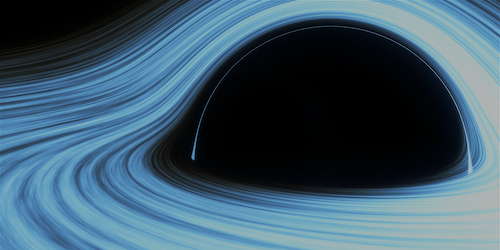Black Hole Area Law Tested
Black holes may be the oddest cosmic creatures, but they should follow simple laws dictated by thermodynamics. Stephen Hawking formulated one such law, stating that the area of a black hole’s event horizon—much like entropy—cannot decrease over time (at least on timescales much shorter than the age of the Universe). Testing this law by sizing up individual black holes is currently impossible, but gravitational-wave observations now allow researchers to do so using black hole mergers. Maximiliano Isi of the Massachusetts Institute of Technology, and colleagues report a direct test of the theorem, obtained by analyzing the first merger ever detected, GW150914. The team’s comparison of the black hole sizes before and after the merger shows that the theorem isn’t violated [1].
When applied to a merger, the area theorem implies that the combined area of the two progenitor black holes cannot exceed that of the postmerger remnant. Spurred by a question from physicist Kip Thorne, Isi and co-workers developed a method for calculating these areas from the gravitational-wave signal. The method involves extracting the “before” and “after” black hole areas by analyzing, in the time domain, the “inspiral” and “ringdown” portions of the signal, respectively. The team compared procedures that included or excluded different parts of the signal—such as overtones, or a narrow window around the moment of coalescence—as each of these analyses required different assumptions. They found that, for this specific merger, the theorem held with at least 95% probability (or 2-sigma confidence). By analyzing other detections—past and upcoming—the researchers say that they can improve this accuracy and also vet the theorem’s validity on a large population of black holes or black hole candidates.
–Matteo Rini
Matteo Rini is the Editor of Physics Magazine.
References
- M. Isi et al., “Testing the black-hole area law with GW150914,” Phys. Rev. Lett. 127, 011103 (2021).




